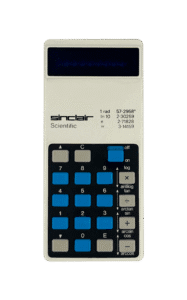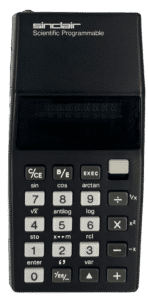Scientific (1974-75)

This white, pocket-sized calculator offered scientific functions at a fraction of the cost of its competitors. Built around a chip designed for basic arithmetic, its advanced capabilities—such as logarithms and trigonometry—were enabled by clever programming, though often with reduced speed and accuracy. To simplify the hardware, it used Reverse Polish Notation (RPN) for entering calculations, which made operation less intuitive for users, and its ingenious code continues to fascinate—being reverse engineered in 2013 by a Google programmer.

This black calculator offered basic programmability at a fraction of the price of rival models. Slightly larger than the earlier Sinclair Scientific, it allowed users to store up to 24 steps—enough for short custom routines—but the real appeal lay in its library of over 400 pre-written programs covering topics from physics and statistics to engineering. Marketed as a “miniature computer,” it introduced programmable devices to a broader audience. Some of its design quirks, like multi-function keys, would later reappear in Sinclair’s ZX microcomputers.
